Closure of hospital in small Michigan village is window into rural health care challenges
LAKEVIEW — Joyce Wright lives across the street from what everyone in rural Lakeview simply called Kelsey Hospital.
The 92-year-old has lived in the Montcalm County village of about 1,000 since she was 18. A village about an hour northeast of Grand Rapids that for more than a century has had its own hospital.
The hospital where Wright's three children were born and where her four sisters had their babies. The hospital where her parents and husband died.
The two-story building, which Wright can see from her front window, was the place where she, too, expected she would spend her last days, in the heart of the 2.1-square-mile village.
But that probably won’t happen.
Workers and long-term care residents displaced
Early this month, Corewell Health — the state's largest health system — shuttered Spectrum Health Kelsey Hospital.
The health system said usage declined, especially emergency room volumes and particularly after the COVID-19 pandemic. Corewell also said the 60-year-old building was dated and had aging infrastructure that made delivery of care challenging.
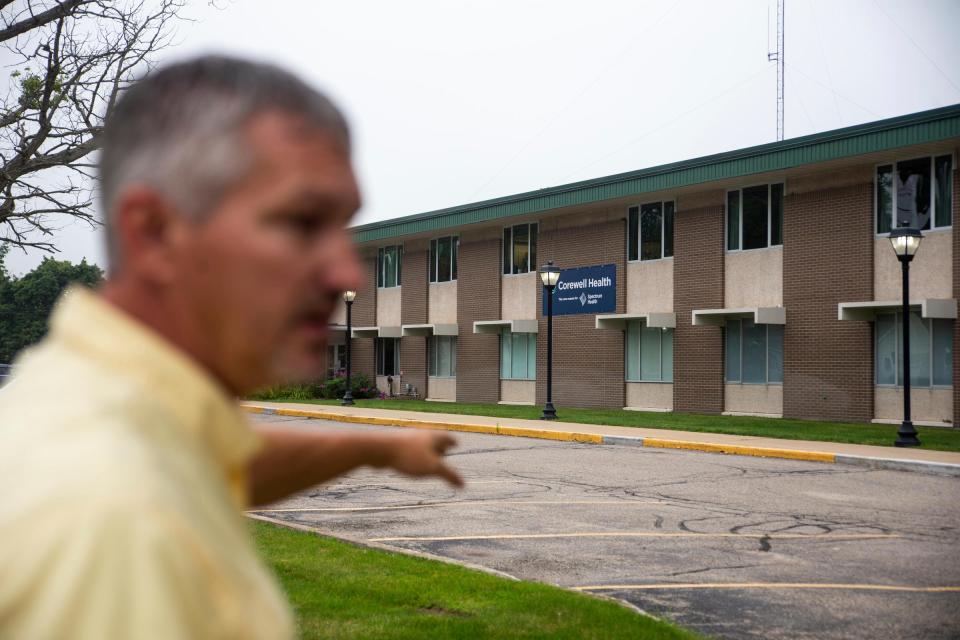
The closure impacted 108 jobs as well as 17 long-term care residents, all of whom were relocated to other care settings by Sept. 7, said Andrea Leslie, a regional market leader for the health system, who also served as hospital president. At the end of September, she said 78 employees had chosen to stay with the health system.
The facility joins a long list of rural hospital closures across the country and offers a window into some of the challenges in rural health care.
Those challenges include fewer patients and reimbursements; higher costs; workforce shortages, from EMS to specialty care to hospitals; long travel distances to reach medical services and hospitals; the closure of specific units, such as maternity wards; scarce behavioral health and oral health services, and finding more and better ways of providing caring for a population that is older, poorer, has more comorbidities and fewer transportation options, including a lack of taxies, buses or ride-hailing services.
"We have to get paid more than it costs to deliver the service or at least break even," said Hillsdale Hospital CEO JJ Hodshire. "I mean Medicaid cannot reimburse a fraction of the cost to provide the service because the hospitals will dry up. It's going to take true payment reform to cover the expenses associated with delivering care that is received. I also think that not only does there have to be government payment reform, but also commercial insurance."
Brian Peters, CEO of the Michigan Health & Hospital Association, said earlier this year that rural health care is "at a crossroads."
"We have to provide new options … new opportunities," he said. "I think all of us — as residents of this state — want to have access to care, whether we're in the big city or whether we're on vacation in northern Michigan, or we're commuting from point A to point B. You never know when you're going to need health care and we need to have that infrastructure protected into the future."
More: Surge of Michigan urgent cares may have saturated the market
Rural hospitals close or reduce services
Since January 2005, 199 rural hospitals in the U.S. have closed or converted to be either emergency hospitals or primarily outpatient facilities, according to the Cecil G. Sheps Center for Health Services Research at the University of North Carolina at Chapel Hill. Three Michigan sites make its list: Sturgis Hospital, Cheboygan Memorial Hospital and Leelanau Memorial Health Center in Northport.
In August, Sturgis Hospital in St. Joseph County near the Indiana border announced it was named Michigan's first rural emergency hospital after nearly shutting its doors. The hospital, opened in 1925, is one of a few in the country with the new rural emergency hospital designation.
Rural emergency hospitals were established by Congress in the Consolidated Appropriations Act of 2021 to help critical-access hospitals and certain rural hospitals avert potential closure and continue to provide essential services, according to the Centers for Medicare & Medicaid Services.
The designation allows them to participate in Medicare and receive payment for items and services furnished after Jan. 1 of this year, according to the Michigan Center for Rural Health at Michigan State University. The Michigan Health & Hospital Association said these hospitals do not provide inpatient care, but provide 24-hour emergency services. A critical-access hospital or small rural hospital with no more than 50 beds could convert to a rural emergency hospital, according to the association.
Michigan has 37 critical-access hospitals, a designation for eligible rural hospitals created by Congress in 1997 in response to more than 400 rural hospital closures in the 1980s and '90s, according to the Michigan Center for Rural Health.
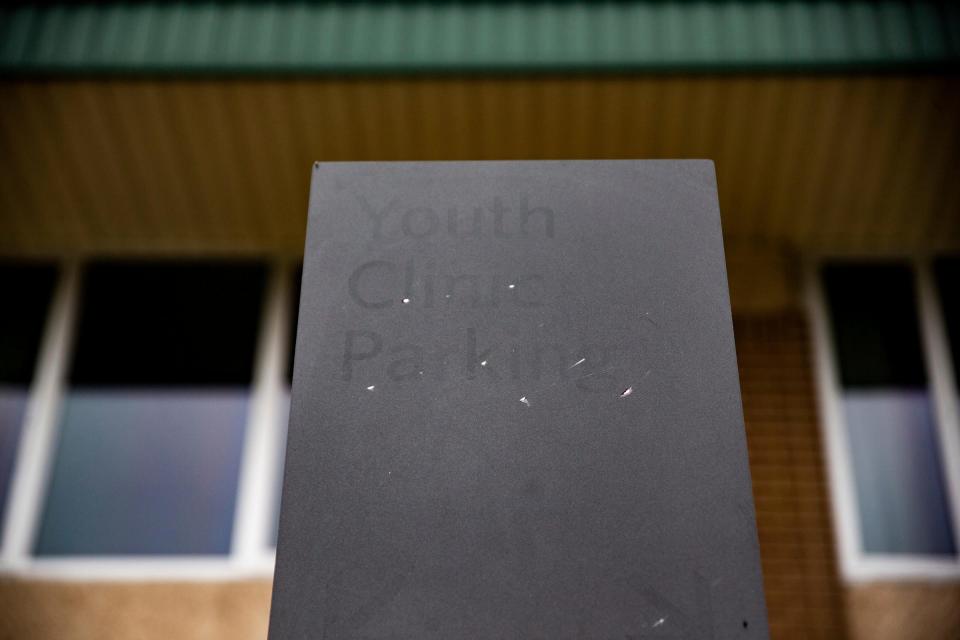
These hospitals have up to 25 inpatient beds and 24/7 emergency care. They are limited to 96 hours of inpatient care and offer primarily outpatient services, according to MiCareMatters.org. It states these hospitals are typically reimbursed for Medicaid at lower rates than other hospitals because of the populations they serve and the services they provide. The shuttered hospital in Lakeview was on the critical access hospitals list.
More: Closure of Detroit's Sinai-Grace cancer clinic stuns patient, who worries about neighbors
The Michigan Center for Rural Health, a program to increase access to primary care services for Medicaid and Medicare patients in underserved rural areas, also identifies 230 rural health clinics in the state. They are to be required to use a team approach of physicians working with nurse practitioners, physician assistants and certified nurse midwives to provide services. They must be staffed at least half of the time with one of these non-physician practitioners and provide outpatient primary care services and basic laboratory services, according to the center.
Maternity care in rural areas strained
If rural hospitals haven’t shuttered, some may have closed specific units, such as obstetrics and delivery, with many women in the U.S. living in maternity care deserts and driving farther to deliver their babies. Areas with low or no access to maternal care affect more than 5 million women and nearly 350,000 births in the U.S., according to a report from the March of Dimes.
In Michigan, 18% of counties, mostly in the Upper Peninsula and northern Lower Peninsula, were defined as maternity care deserts and 4.6% of women had no birthing hospital within 30 minutes, according to the report. It states that, on average, a woman in Michigan travels just over 8 miles to a hospital providing obstetric care. Women living in maternity care deserts travel 4.5 times farther than those with full access.
The March of Dimes analysis for Michigan said that more than 1,400 babies were born in maternity care deserts in 2019-20, 1.4% of all births. More than 7% of babies were born to women who live in rural counties, while 4.8% of maternity care providers practice in rural counties in the state, according to the report.
More: State puts $8 million into SOS effort to save Michigan moms and babies
Munson Healthcare in northern Michigan announced a regional care transformation plan Sept. 27, a three-year plan to expand primary care, improve access and increase virtual care. Its hospitals will continue to have full emergency services, but Otsego Memorial and Cadillac will become regional hospitals and Charlevoix, Grayling, Manistee and Paul Oliver will become community hospitals with observation, limited inpatient care and more focus on outpatient services. Munson Medical Center in Traverse City will be a high-level specialty care center available 24/7.
"There are hospitals closing across the country. And this plan ensures that we don't have to do that," said Megan Brown, chief marketing and communications officer for Munson Healthcare. "So long term, this will be more and better access to the services people want."
The health system also is discussing an upgraded, redesigned regional birthing center in Gaylord that may change where someone delivers their baby in the future. Local obstetrics and gynecology services will be available to patients in Grayling, and deliveries are expected to continue there for at least two more years.
But Gaylord, about 30 minutes away, has a larger population and is a growing community where long-term demand is anticipated to be strong, according to the health system.
More: At least 60% of maternal deaths in Michigan are preventable
In the Upper Peninsula, getting to appointments or specialty care can be difficult when someone is pregnant or has young children, said Kristen Christiansen, program manager at LMAS District Health Department. The department serves Luce, Mackinac, Alger and Schoolcraft counties and has home visit programs for those who are pregnant and for parents of young children.
"Where I am in Newberry, the closest OB units are, one is in Marquette, which is 100 miles away, and another one is in Sault Ste. Marie, which is about 60 miles away," Christiansen said. "So sometimes getting to those appointments can be challenging with weather or something you might not be expecting."
'(When) you lose your hospital, it's ugly'
Lakeview touts that it has everything offered in a bigger town: a large grocery store, airport, cemetery, museum, dog park, lake, waterfront park and other amenities. Its quaint, historic, three-block downtown is sprinkled with local-owned restaurants and specialty shops. Locals are proud all of the stores are full.
Word of the closure of the hospital, which stretches the block on Washington Avenue between Third and Fourth streets behind some of the downtown stores, shocked area residents and village officials. They learned about the closure around the same time as hospital employees. A former resident who is a doctor in Petoskey started an online petition to save the hospital and wrote to Gov. Gretchen Whitmer, imploring her to work with the health system in an effort to keep it open.
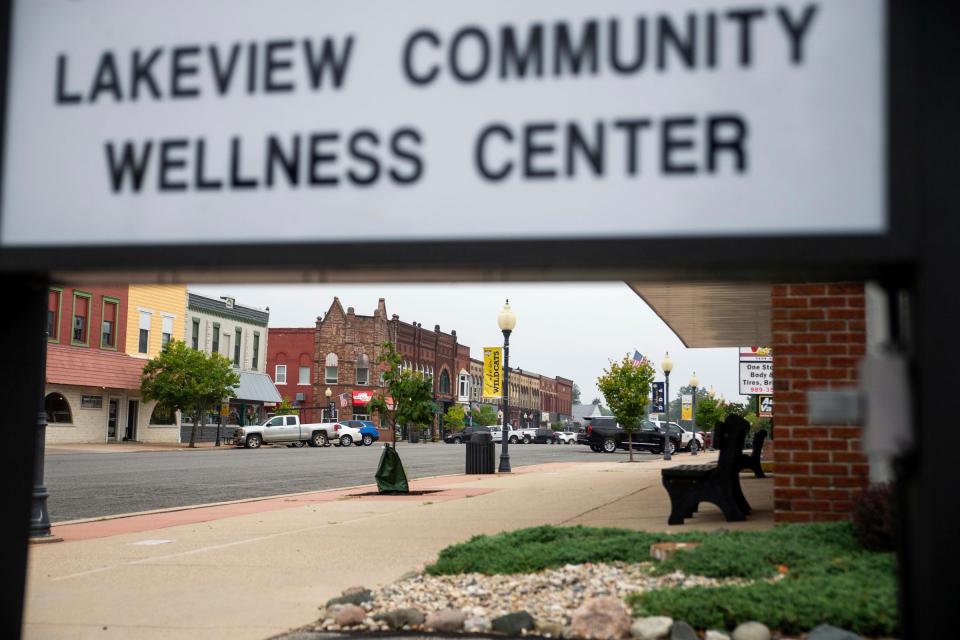
Village Council President Emily Griffith, who owns Griffith Market downtown, said residents were "disappointed and scared." Peddler's Patch and Village Kupps owner Raymi Sunabe said no one thought the hospital would be gone.
The announcement was the latest blow after the closure of several other health-related sites near the hospital, leaving each of their former spaces vacant: rehabilitation and physical therapy; a specialists' office; a youth clinic in place since 2011 and walkable from the middle school across the street, and the family medicine office across from the hospital's front entrance — and next to Wright's house, where she said her doctor was located.
The services were relocated to a new $12 million Corewell Health Lakeview Care Center on busy M-46, more than a mile away, but within the village's boundaries. When the 15,800-square-foot center opened in June, Village Manager and Police Chief Darin Dood said residents were told the hospital would stay open. At the beginning of August, they learned it wouldn’t.
“(When) you lose your hospital," he said, "it's ugly."
'Huge decline' in hospital usage
Leslie, who is president of other Corewell Health hospitals in the area, said the hospital experienced a "huge decline" in utilization for the past decade. Emergency room volumes and the number of nursing center residents declined significantly after the COVID-19 pandemic. The hospital had 7,728 emergency department visits last year compared with 10,113 in 2017, according to the Michigan Department of Health and Human Services.
She said about 40% of the ER visits could have been seen in a primary care setting. The new clinic was built to help lower the cost of care, she said, and provide patients "with the right level of care at the right time, the right place."
Leslie said not many of the rehab nursing center residents stayed in town because the village has no other nursing home facility. One long-term care resident, however, is in adult foster care in town. Leslie said Corewell Health took several of the residents in at its other facilities, including in Greenville and Reed City. Many staff members also transferred to those locations.
Locals were concerned the closure would impact access to 24/7 health care, especially for emergencies such as heart attack, stroke or anaphylactic shock from a bee sting, They feared losing convenient early morning appointments for lab work and X-rays and CT scans at the hospital.
The new care center, which offers lab services, is open 8 a.m. to 8 p.m. weekdays and 8 a.m. to 2 p.m. Saturday and Sunday, Leslie said. It doesn't have radiology, so X-rays and CT scans must be done elsewhere. When it's closed and patients need an urgent care or hospital, they'll have to drive to Greenville, Big Rapids or Sheridan, each at least a half-hour away depending on weather and traffic on rural roads shared with Amish buggies.
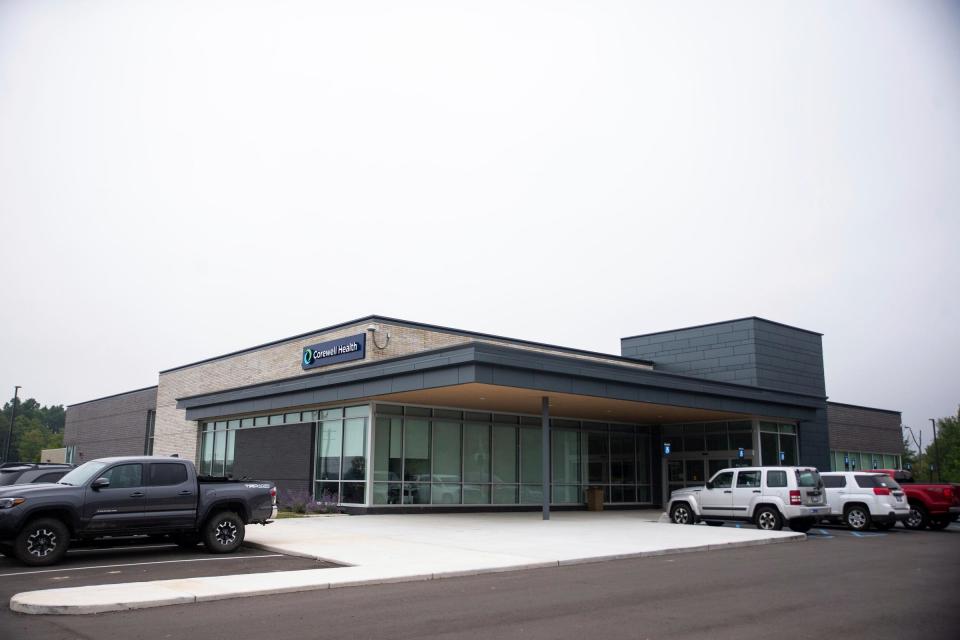
"For some people, it'll be a real hardship," said Laura West, longtime manager of Main Street Pizza, which was patronized by hospital patients and workers, hired high schoolers who used the once-nearby youth clinic and utilized the hospital when employees cut themselves on a new slicer.
West, who lives 11 miles out of town, said Kelsey Hospital was the closest ER to her home.
Jay Schwandt, of Rockford, near Grand Rapids, has a house and office in Lakeview, spending about half his time there. He said his family, which includes 15 children — most at home, including boys in sports — is relocating to Lakeview full time. He said he used the hospital often and believes it’s going to be a "huge burden for many to go somewhere else."
Leslie acknowledged people will need to travel for emergency care.
"But what we find is ... we haven't had a lot of inpatients at Kelsey Hospital in the last several years," she said. "And so ... if someone needs to be admitted for something, we're transferring anyway. So when we think about EMS services, and really helping them to be more efficient — and they have incredible staffing shortages as well — we feel like this actually will help them to be able to get people to the right level of care first ... right out of the gate versus stopping by and then transferring yet again, which is what happens currently."
Recruiting workers in rural areas is difficult
Workforce shortages for doctors and nurses are plentiful, with colleges and universities working to develop ways to add bachelor of science in nursing programs and to form partnerships with health systems to recruit and retain workers. But emergency medical services are struggling just as much to hire paramedics and other personnel.
It's even more difficult in rural areas where EMS workers, who range from volunteers to paid, full-time paramedics, are the first line of medical care for patients — many of whom they may know — and may spend hours caring for and transporting them to hospitals or large trauma centers great distances away.
That's especially true in areas such as the Upper Peninsula and southern borders near Ohio and Indiana, taking a truck out of service for hours and reducing health care in that community, said Angela Madden, executive director of the Michigan Association of Ambulance Services.
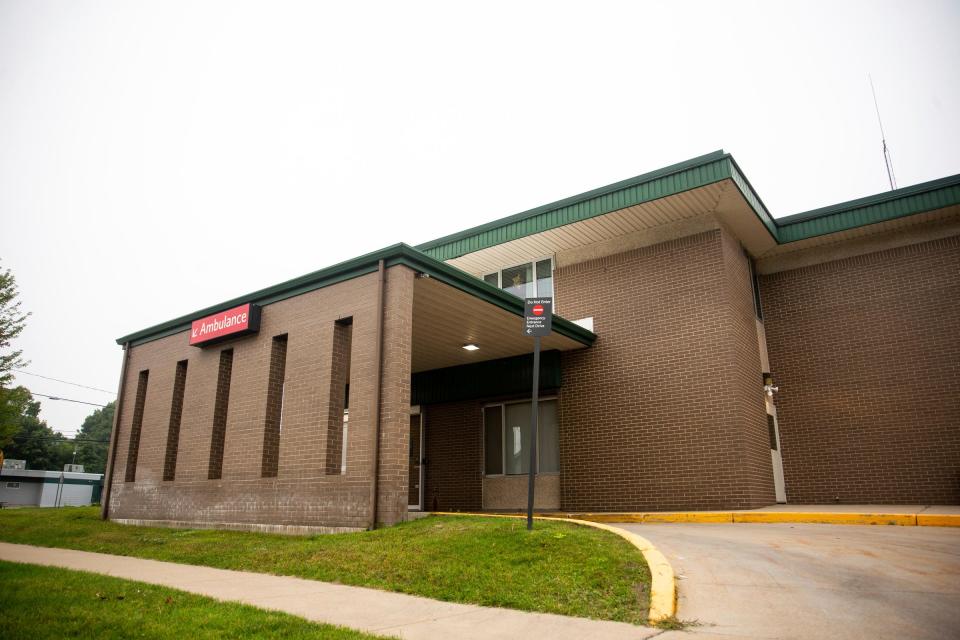
"To try and recruit to rural areas makes it very difficult. You have to have a different mindset to live or work in a rural area. Living in a rural area creates its own special challenges," said Gary Wadaga, director of Bay Ambulance in Baraga in the Upper Peninsula, 70 miles west of Marquette and along Keweenaw Bay.
The ambulance service area is about 1,500 square miles, serving 9,000 people in Baraga County and surrounding areas. It's available 24/7 with four ambulances, six full-time paramedics and 40 volunteer emergency medical technicians, Wadaga said.
Wadaga said access to care has changed, with more patients calling EMS to begin their care and then be seen in the hospital. EMS often is called for patients who have fallen and simply need help getting up.
Madden said if an ambulance doesn't transport a patient, EMS may not get reimbursed. The service must either write off the debt or bill the patient. Millages often help EMS cover costs in their community, if they are approved by voters.
Schoolcraft County residents will vote on a November ballot proposal of 2.25 mills for five years, beginning this year, for operating and capital funds for ambulance services. If approved, the millage initially would raise about $955,592. At the beginning of the year, Manistique City Council approved a two-step deficit elimination plan for the ambulance fund: Plan A was to run a countywide millage; Plan B was to close the service and sell any remaining assets.
Rick Dupon, chief of Denton Township Ambulance Service in Roscommon County, said he believes the growth of community paramedic programs would help close some of the rural health care gaps and alleviate EMS calls to check on patients. He said his service has about 50 nontransport calls a month.
Community paramedicine is more of a scheduled house call in which paramedics can provide screenings, change bandages and help patients find ways to improve their health or areas in their home to, for example, prevent future falls. The state has nearly 20 community integrated paramedic programs.
'In-home health care, that's a great concept'
A new technology-enabled health care provider also is trying to make inroads in rural counties in west Michigan and parts of Minnesota. Homeward Health was launched last year to bring care to Medicare-eligible people in Michigan. It is available in 15 counties and has clinics in Battle Creek and Grant, in Newaygo County, as well as 24 counties in Minnesota, company officials.
Co-founder and CEO Dr. Jennifer Schneider, who is from rural Minnesota, said the model includes in-home visits, monitoring of chronic conditions and telehealth. Mobile clinic vans also move around the communities offering in-person care, blood draws and testing.
Patients can be referred to local health facilities, such as for colonoscopies and other procedures. The service is partnered with Priority Health. Schneider said the goal isn't to take primary care providers out of commission, but to work with them and others in the rural market.
“We are uniquely positioned to make a big change,” she said.
Linda Kotzian, 73, of Shelby, a retiree on Medicare, said she grew "increasingly disenchanted with the situation in our rural area for health care." Her doctor was accessible, but less so during COVID-19; and while she had online access, it took increasingly long periods of time to reach her.
The Oceana County resident read about Homeward Health and thought "in-home health care, that's a great concept. It's something I have dreamed about and I didn't think it was available in this area." A week before her initial appointment, she fell walking her dog and broke her shoulder.
She said she called Homeward Health and received a return call within 30 minutes. The health care professional was concerned and advised her to go somewhere to get an X-ray, which she did. A day or two later, she received a follow-up call. She said she felt a connection with her initial nurse practitioner, who later suggested a less expensive prescription for a medical situation she had.
"Rural people live rural for a reason ... they're protective of their privacy," Kotzian said. "There are so many facets to barriers to medical care in the rural area, not all of it to do with poverty, some of it just to do with mindset."
Health systems continue to pursue more telehealth and virtual care options, which can be beneficial for rural patients — if the broadband infrastructure is in place.
"From all the negative of COVID ... it challenged the way we deliver care. We started embracing those virtual options," said Mike Erickson, president northern region of MyMichigan Medical Center Alpena. "We step up and deliver medicine differently. A lot of folks started virtual visits. I don't think that genie's going back in the bottle."
'It's so depressing. It's not the same.'
Just like the virtual genie can't be put back in the bottle, time can't be rewound for Kelsey Hospital, where Danelle Wood, owner of Lakeview Floral, a four-minute walk away, said Kelsey provided more personal attention and less wait time than bigger hospitals.
"It's not a huge metropolitan hospital, but it's what the community needed," said Rose Ann Burden, owner of Aunt Zann’s Dips and More, which sometimes was the destination of a wheelchair parade when the long-term care residents were brought over for ice cream.
Wright's granddaughter-in-law, Samantha Wright, moved her 74-year-old mother from Newaygo County to long-term care at the hospital nine months ago, minutes away from her Cato Township home and her job at a local school.
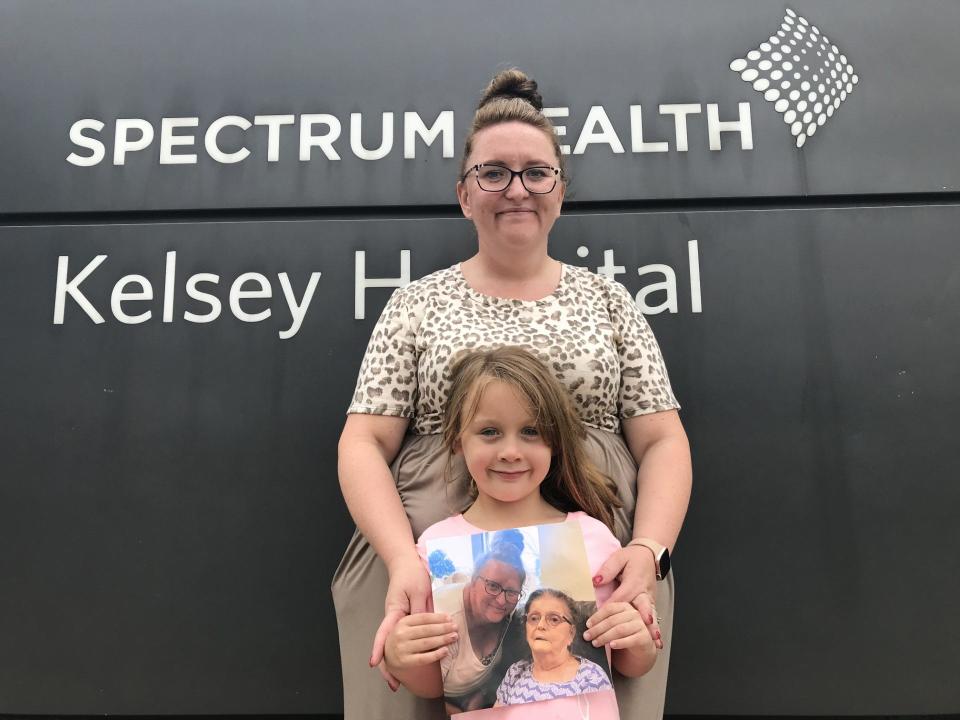
She and her 6-year-old daughter, Kinsleigh, visited her mother, who has dementia, three to five times a week. With the closure, she moved her mother to hospice care in Reed City, an hour away. Now, she only can visit her mother twice a month.
She said she doesn't purposely drive past Kelsey Hospital anymore.
"Quite literally, the life is out of it," she said. "It's so depressing. It's not the same."
In addition to concerns about emergency health care needs, Lakeview-area residents also were concerned about the economic ripple of the closure. Fewer employees, long-term care patients and their families downtown may mean less business for restaurants, coffee shops and stores.
Police Chief Dood anticipated less water and sewer income for the village and more cost for gasoline and wear on police vehicles when an officer has to drive to Greenville to take a suspected intoxicated driver for a blood test or someone for a mental health evaluation. In the past, he said, police went to Kelsey Hospital for that.
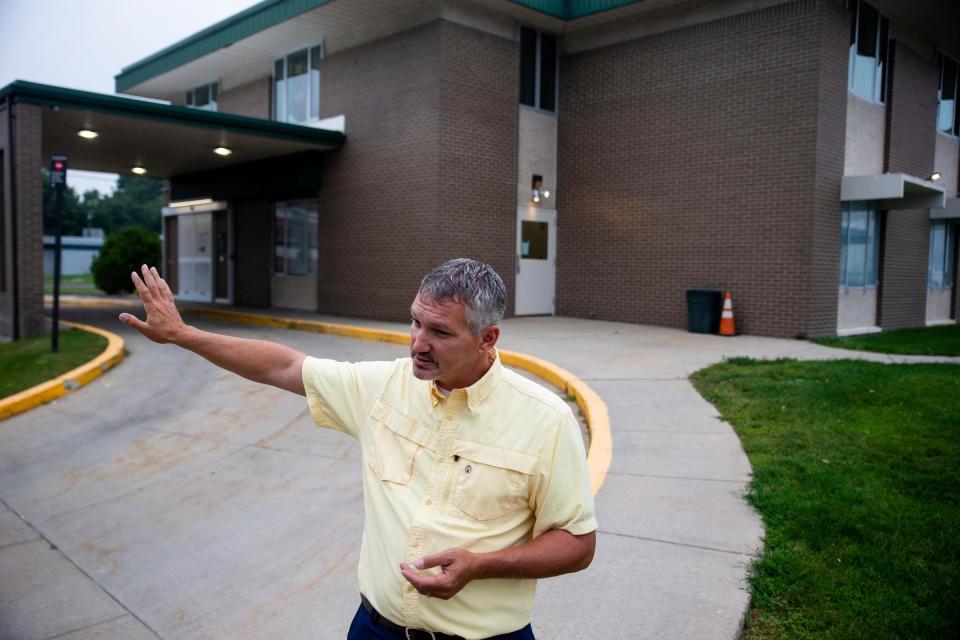
Perhaps, he said, there could be a silver lining if the hospital property is turned into housing, of which there is a shortage in town.
Leslie said the health system is working with Dood and the Montcalm Economic Alliance to source potential development of the property and is "very committed to ensuring that something good happens there." She said the vacated family medicine building sold Sept. 22, but she didn't know what was going into the site.
Leslie said a behavioral health telemedicine program was put into place inside the high school, offering similar services as the youth clinic. Youths also can see their same provider for primary care services at the new care center.
But for Joyce Wright, it's not going to be the same without the hospital and its workers, who once brought a wheelchair across the street to get her when she needed care.
"I always felt safe with it here because I knew anytime I got sick, I could just go there. And I have, so many times, and they have helped me. I had everything over there," she said.
"We had everything right here. Everything."
Free Press staff writer Kristen Jordan Shamus contributed to this report.
Contact Christina Hall: chall@freepress.com. Follow her on Twitter: @challreporter.
Support local journalism. Subscribe to the Free Press.
This article originally appeared on Detroit Free Press: Michigan rural health care faces challenges as US hospitals close

